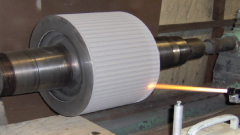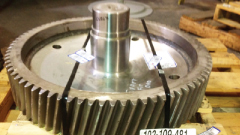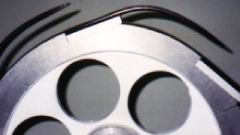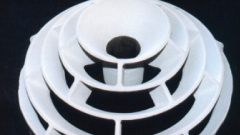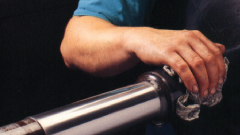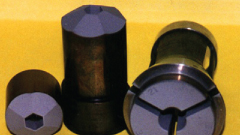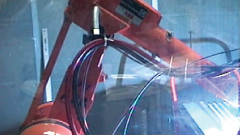WEAR RESISTANT COATINGS
PROTECT AGAINST ABRASION, EROSION, CORROSION, FRETTING/GALLING, CAVITATION, BRINELLING.
REPAIR COATINGS
NO NEED TO SCRAP AN EXPENSIVE PART. REPAIR OR BUILD UP TO A SPECIFIED SIZE. EXTEND PART LIFE.
RELEASE COATINGS
FEATURING DURA-SLIK™ FLUOROPOLYMER COMBINED WITH THERMAL SPRAYED COATING PROVIDES WEAR RESISTANCE ALONG WITH RELEASE PROPERTIES.
THERMAL BARRIER PROTECTION COATINGS
RESISTS TEMPERATURES UP TO 3000° F. ALLOWS THE USE OF LESS EXPENSIVE SUBSTRATE.
LOW COEFFICIENTOF FRICTION COATINGS
COATED COMPONENTS HAVE THE ABILITY TO PERFORM AT HIGHER SPEEDS.
SURFACE TRACTION COATINGS
Long lasting surface finishes that prevent slippage, interruptions & breaks. Improves web tracking and tension control.
BRUSH PLATING
Repair or rebuild to a specified size, tolerance and surface finish. Plate an entire surface or target a small localized area.
GENERAL CAPABILITIES
Services, coating features, part size capability.
HVOF Coating Use in Industrial Workplaces
High-Velocity Oxygen Fuel (HVOF) coating is actually a thermal spray coating procedure, which can be used to enhance or restore a component’s surface (properties or geometry). This surface engineering technique better enables life extension of equipment by increasing erosion and wear resistance, and corrosion protection.
HVOF spraying was developed in the 1980s and is a subset of thermal spraying. HVOF spraying functions by mixing fluid fuel and oxygen, which can be fed into a combustion chamber and ignited. The resultant gas has an incredibly higher temperature and pressure, which can be ejected by way of a nozzle at supersonic speeds. Towards the high-velocity gas stream, the powder is injected, which partially melts. The stream of hot gas and powder is directed towards the surface to become coated. The resulting dense coating has low porosity and higher bond strength, delivering numerous advantages which include corrosion resistance.
When is HVOF Coating Used?
Done appropriately, HVOF has a low environmental effect and produces important gains in overall performance. Deposited coatings can contain ceramics, metal alloys, metals, polymers, and composites. HVOF coating is often sought out to boost components in the following methods, improved electrical properties, resistance to reduce and greater temperatures, protection against caustic and corrosive chemical compounds, enhanced efficiency and lifespan of mating elements, high influence velocity suggests HVOF coating are denser and smoother than quite a few alternatives.
The resulting coating is also tougher as a result of reduced degradation of carbide phases and significantly less residual strain. Intensive surface preparation can further boost adhesion.
HVOF Coatings in the Industrial Atmosphere
HVOF provides superior protection compared to other thermal spray coatings. That mentioned, HVOF isn’t deployed as often as some other industrial coating processes. There are several causes for this, with the expense being a substantial element in the calculation.
Some elements are certainly not appropriate for the HVOF course of action. HVOF can’t be made use of for surface engineering of inner surfaces – for example, the interior surfaces of cylindrical objects. Narrower size distributors have to be made use of to make sure desirable HVOF outcomes.
That mentioned the primary factor that restrains some organizations from adopting HVOF can be a matter of safety. Specialized application equipment has to be operated as outlined by the highest security requirements. Most industrial enterprises must seek third-celebration HVOF expertise.

